‘Miraculous meddlers’: the Catholic Action movement
Published in 20th Century Social Perspectives, 20th-century / Contemporary History, Features, Issue 5 (Sept/Oct 2010), Volume 18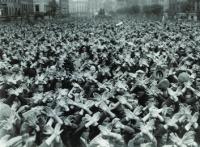
Irish Christian Front meeting, Grand Parade, Cork, 1936, one of many such organisations established in the ’30s and ’40s. (Cork Examiner)
In the newly independent Irish Free State the Catholic Church was deeply insecure about its role in the new state, which had been born out of violence—a violence, moreover, that had revealed how unstable and volatile its flock could be. The ruthlessness and cruelty of the Civil War had appalled churchmen, and the Catholic Church’s support for the new government aroused hostility from a large minority of republicans. The depth of this hostility, with its potential for anti-clericalism, shocked many in the clergy and the hierarchy. In the years after the Civil War the bishops’ pastorals were full of gloomy, doom-laden pronouncements about the inherited sinfulness of the people and the need for constant vigilance against threatening influences. To counter these threats and to ensure that its influence would be maintained, the Catholic Church found a willing ally in the new militant crusading movement called Catholic Action, described by a 1933 Catholic Truth Society of Ireland (CTSI) pamphlet as ‘. . . a necessary movement of lay Catholics into the front line trenches of the fight between Christianity and paganism. To be effective in this fight they must be trained, organised, and disciplined as efficiently as the forces which are arrayed against them.’
Another CTSI pamphlet, The serried ranks of Catholic Action (1934), again utilising military terminology, reviewed the ‘existing troops of Catholic Action’:
‘Our main army of advance will consist of the formative and constructive societies. The general staff will be the CTSI. The centre or main strength of the Catholic Action army will be the CYMS [Catholic Young Men’s Society] with its core of seasoned veterans. On the right, our eager new levies, the Knights of St Columbanus. On the left will flutter the banners of the Legion of Mary. Many other units will be gladdened by the spectacle of our Irish army of Catholic Action marching in serried ranks to battle and to victory.’
Realities of political independence
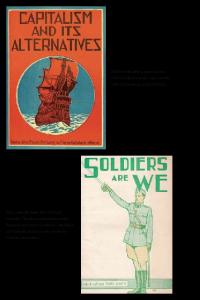 It came as no surprise that both Church and State should share the same platform at the 1923 CTSI annual conference to discuss aspects of the future direction of independent Ireland. W.T. Cosgrave and his colleagues had the task of state-building, and their collective style of government during the 1920s was to eschew flamboyance for a sober patriotism and a self-effacing zeal designed to return the country to normality. An impecunious government, burdened by the debt of war-induced destruction and faced with expectations that had been elevated unrealistically by the political rhetoric of 1916–21, was unable to achieve rapid and radical social reform. Unemployment and emigration continued. In this difficult situation the Free State would remain predominantly Catholic and nationalist in ethos. Throughout the decade the leaders of Church and State were prominent together at public and state occasions, including the platforms of the CTSI.
It came as no surprise that both Church and State should share the same platform at the 1923 CTSI annual conference to discuss aspects of the future direction of independent Ireland. W.T. Cosgrave and his colleagues had the task of state-building, and their collective style of government during the 1920s was to eschew flamboyance for a sober patriotism and a self-effacing zeal designed to return the country to normality. An impecunious government, burdened by the debt of war-induced destruction and faced with expectations that had been elevated unrealistically by the political rhetoric of 1916–21, was unable to achieve rapid and radical social reform. Unemployment and emigration continued. In this difficult situation the Free State would remain predominantly Catholic and nationalist in ethos. Throughout the decade the leaders of Church and State were prominent together at public and state occasions, including the platforms of the CTSI.
Although Pope Pius X was the first to use the term ‘Catholic Action’, stressing its importance in several encyclicals, it was Pope Pius XI (often called ‘the Pope of Catholic Action’) who gave it its classical definition as ‘the active participation of the organised laity in the apostolate of the Church’s hierarchy’. The concept was implicit in his first encyclical, Ubi Arcano Dei (1922). Pius XI gave Catholic Action a charter, a spirit and an apocalyptic urgency. He tended to restrict the term to action or work of the laity that was organised, apostolic and carried out under the special mandate of a bishop. A spate of manuals and handbooks developed these points, and one in particular became a veritable bible for Catholic Actionists in Ireland—Civardi’s Manual of Catholic Action (1933). Further stimulus was given to the movement with the call of the 1927 synod of Maynooth for lay Catholics to join organisations for the defence and upholding of Catholic opinion. A number of new organisations sprang up in Ireland during this decade: the Legion of Mary, the Central Catholic Library, the Guild of Catholic Nurses, An Rioghacht, the Knights of St Columbanus, and the Modest Dress and Deportment Crusade. Other established organisations, including the CTSI, the Catholic Protection and Rescue Society of Ireland, the CYMS and the Ancient Order of Hibernians, undertook increased organisational activities. The 1930s and 1940s also witnessed the establishment of new organisations, including the League for Social Justice, the Guilds of Regnum Christi, Muintir na Tíre, the Irish Christian Front, Christus Rex and Maria Duce. These organisations focused on different activities—e.g. the CTSI campaigned successfully for censorship legislation.
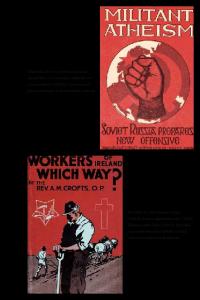 The CTSI’s propaganda (millions of its booklets were disseminated every year until well into the 1970s) and vigilance activities prior to independence ensured that the society would be in the vanguard of any new campaign. Consequently it spearheaded a campaign from 1925 to 1929 in favour of censorship of literature. In response, the new government established the Committee of Enquiry on Evil Literature. Not surprisingly, the committee’s findings and the consequent Censorship of Publications Act, 1929, reflected CTSI submissions, summed up in its pamphlet The problem of undesirable printed matter: suggested remedies. As well as influencing the subsequent 1946 Censorship of Publications Act, the society was represented on every censorship board until the late 1950s. The CTSI was also heavily involved in the 1929 Catholic Emancipation Centenary celebrations and in organising the 1932 Eucharistic Congress.
The CTSI’s propaganda (millions of its booklets were disseminated every year until well into the 1970s) and vigilance activities prior to independence ensured that the society would be in the vanguard of any new campaign. Consequently it spearheaded a campaign from 1925 to 1929 in favour of censorship of literature. In response, the new government established the Committee of Enquiry on Evil Literature. Not surprisingly, the committee’s findings and the consequent Censorship of Publications Act, 1929, reflected CTSI submissions, summed up in its pamphlet The problem of undesirable printed matter: suggested remedies. As well as influencing the subsequent 1946 Censorship of Publications Act, the society was represented on every censorship board until the late 1950s. The CTSI was also heavily involved in the 1929 Catholic Emancipation Centenary celebrations and in organising the 1932 Eucharistic Congress.
An Rioghacht was an élitist movement devoted to advancing Catholic social principles amongst those in influential positions in Irish public life. The revived CYMS found a raison d’être in vigilance and anti-Communist activities and in organising Catholic social weeks. With all these organisations emerging and developing, Ireland’s Catholic identity was further strengthened. At the same time Catholic Action helped to influence the final version of the 1937 constitution and gave cohesion and identity to the fledgling Irish Free State.
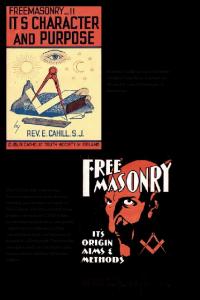 By the 1940s there were thousands of Catholic Actionists at work throughout the country, with every parish having at least half a dozen organisations acting as moral guardians and constantly feeding information to priests and bishops on local and national developments. They had become the eyes and ears of the Catholic Church (Seán Ó Faoláin referred to them as ‘Miraculous Meddlers’; Peadar O’Donnell regarded them as the ‘yahoo laity’).
By the 1940s there were thousands of Catholic Actionists at work throughout the country, with every parish having at least half a dozen organisations acting as moral guardians and constantly feeding information to priests and bishops on local and national developments. They had become the eyes and ears of the Catholic Church (Seán Ó Faoláin referred to them as ‘Miraculous Meddlers’; Peadar O’Donnell regarded them as the ‘yahoo laity’).
Catholic Actionists also turned their attention to the growing ‘celluloid menace’, with the CTSI and An Rioghacht in the forefront of the Catholic Theatre and Cinema Movement. Efforts were made to ensure that censorship in Ireland was even more rigid than that requested by the Legion of Decency in the USA.
Ideological intricacies
In the 1930s, corporatism/vocationalism came to the fore as a motivating principle. These ideas stemmed from Pope Pius XI’s 1931 social encyclical Quadragesimo Anno, which sought a middle way between what it saw as the excesses of unbridled capitalism and the threat to human freedom posed by Communism. Many Catholic social activists embraced the ideal of vocational organisation of society enthusiastically. Fianna Fáil’s doctrine of economic nationalism had parallels in the subsidiary principle of Quadragesimo Anno. An attachment to corporatism and the social theories of the encyclical helped the establishment of Fine Gael as a political party.
Coinciding with this new mood was the gradual development of a Catholic social vision:
new organisations such as Muintir na Tíre, the Guilds of Regnum Christi and the League for Social Justice; new periodicals such as Prosperity, Hibernia, Outlook and Social Justice; new books, including Fr Edward Cahill’s The framework of a Christian state; and summer schools, rural weekends, study circles and Catholic social weeks did much to harness public discourse and sympathy for this vision.
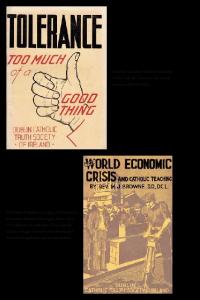 The confidential Jesuit Report on Catholic Action, completed in 1936, pointed out that, despite the fact that Catholic organisations were ‘largely responsible for the passing into law of many important measures of social reform’, there was still much ignorance and confusion over the term. The report argued for greater cohesion of the Catholic Action movement, ‘which it now lacks’. It saw no need for Catholic trade unions or a Catholic political party in Ireland. The report also suggested that the bishops ‘on the whole seem to share the confusion prevalent about the meaning of the term Catholic Action’. Consequently, for this and other reasons they were ‘suspicious’ of the movement and were reluctant to become involved.
The confidential Jesuit Report on Catholic Action, completed in 1936, pointed out that, despite the fact that Catholic organisations were ‘largely responsible for the passing into law of many important measures of social reform’, there was still much ignorance and confusion over the term. The report argued for greater cohesion of the Catholic Action movement, ‘which it now lacks’. It saw no need for Catholic trade unions or a Catholic political party in Ireland. The report also suggested that the bishops ‘on the whole seem to share the confusion prevalent about the meaning of the term Catholic Action’. Consequently, for this and other reasons they were ‘suspicious’ of the movement and were reluctant to become involved.
Control and influence
At their annual meeting in Maynooth in 1939, the Irish Catholic hierarchy considered the whole area of Catholic Action organisation, its validity in Ireland and its future direction vis-à-vis Catholic social teaching. The meeting examined the findings of the Report on Catholic Action drawn up by Fr Peter McKevitt, Professor of Catholic Action in St Patrick’s College, Maynooth. His report saw no room for those who wished to inaugurate a radical form of Catholic Action. It recommended that Catholic Action would have to be more centrally controlled by the hierarchy and the clergy, who would delegate responsibilities to a central board. The ‘inexperience of laymen’ was to be avoided at all costs. The opportunity to implement a strategy would come with the establishment of the Catholic Social Services Conference of 1941, involving nearly 40 Catholic Action organisations. Directed charity was to be the new order of things under Archbishop John Charles McQuaid.
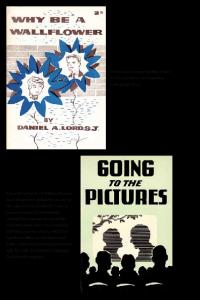 Catholic Action in the late 1940s and 1950s concentrated more on vigilance activities. Fr Denis Fahey’s organisation, Maria Duce (1945), was particularly active in this area, as were the Knights of St Columbanus. The Catholic Cinema and Theatre Patrons’ Association, the Legion of Mary, the St Vincent de Paul Society, St Joseph’s Young Priests Society and the CYMS all continued to be prominent. The post-war Communist threat and the fate of Catholic prelates behind the Iron Curtain focused the attention of Catholic Actionists also.
Catholic Action in the late 1940s and 1950s concentrated more on vigilance activities. Fr Denis Fahey’s organisation, Maria Duce (1945), was particularly active in this area, as were the Knights of St Columbanus. The Catholic Cinema and Theatre Patrons’ Association, the Legion of Mary, the St Vincent de Paul Society, St Joseph’s Young Priests Society and the CYMS all continued to be prominent. The post-war Communist threat and the fate of Catholic prelates behind the Iron Curtain focused the attention of Catholic Actionists also.
The ambiguity surrounding the concept of Catholic Action came to the fore at the 1957 international gathering in Rome of representatives of Catholic lay organisations. By then the term ‘lay apostolate’ was becoming the more acceptable expression, as it could be used to refer to all Catholic lay activity, whether organised or unorganised, whether episcopally mandated or not, without quibbling over terms. A report issued in 1966, Survey of the organised lay apostolate in Ireland, showed that despite falling membership there were almost 30 Catholic lay organisations active in Ireland. There was some carry-over—in leadership, personnel and ideas—from the formative era of Catholic Action to the pro-life and anti-divorce campaigns of the 1980s and 1990s and the Lisbon Treaty debates in the first decade of the 21st century. But that’s another story . . . HI
Maurice Curtis is a historian, writer and editor.
Further reading:
M. Curtis, A challenge to democracy. Militant Catholicism in modern Ireland (Dublin, 2010).
T. Inglis, Moral monopoly (Dublin, 1998).
T.J. Morrissey, A man called Hughes (Dublin, 1991).
J.H. Whyte, Church and State in modern Ireland (Dublin, 1984).
















